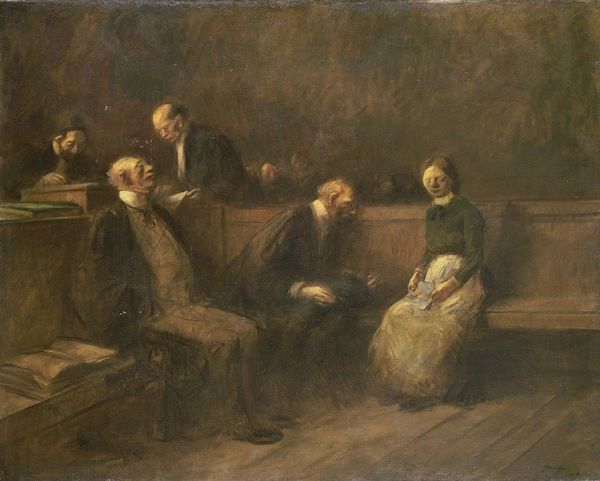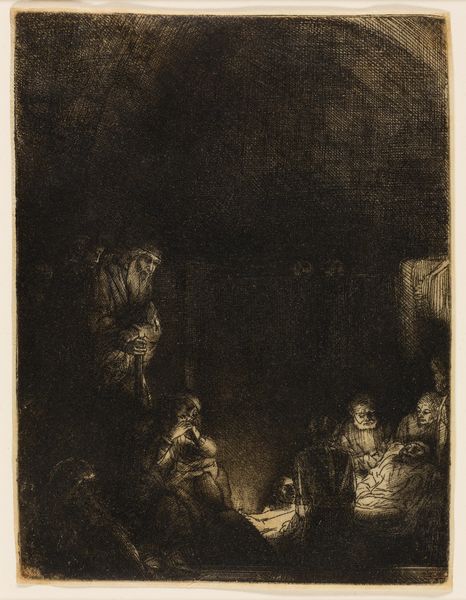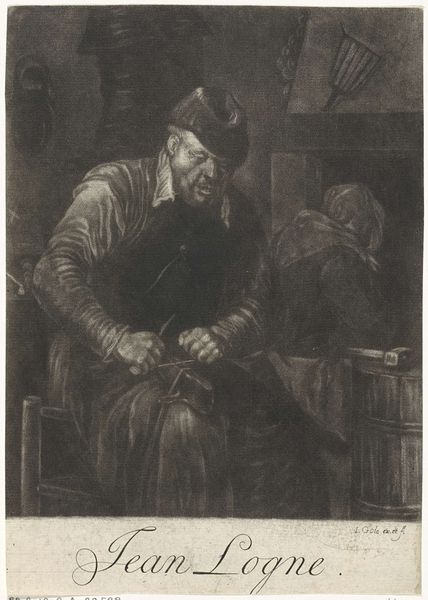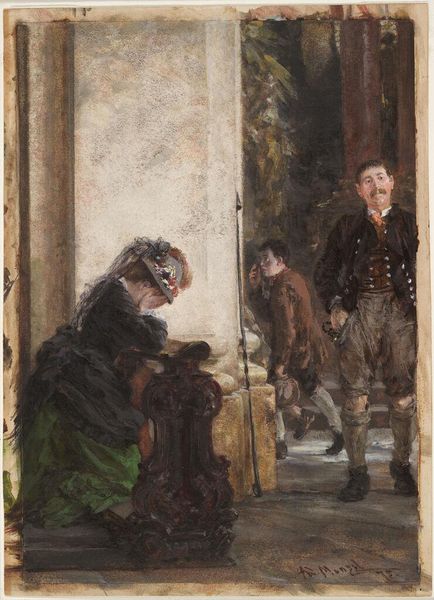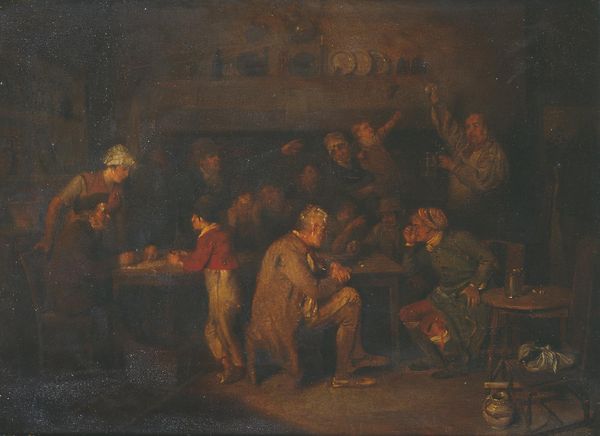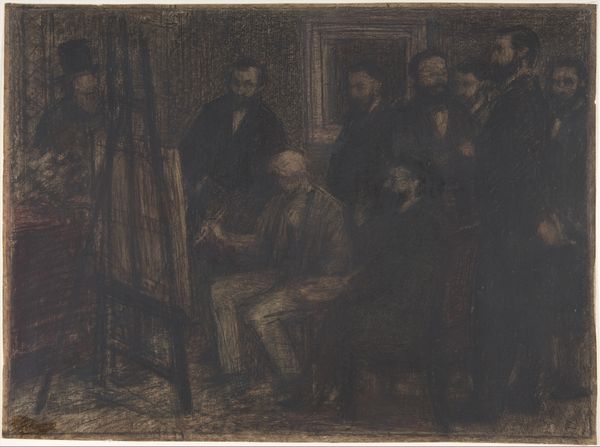
Copyright: Public Domain: Artvee
Curator: I see a dense, shadowy mass, almost impenetrable at first glance. It’s rather gloomy. Editor: This is "Une salle d’attente," or "A Waiting Room," by Honoré Daumier, painted between 1850 and 1853. Daumier worked primarily in lithography, creating satirical commentary on French society, but he also made paintings like this one using oil paint. What do you see in terms of symbolism here? Curator: There's a definite feeling of anxiety and oppression. The lighting—or lack thereof—suggests confinement. We’re given glimpses of faces, huddled figures, yet none seem to connect, each isolated within this shared space. I sense a commentary on societal alienation. The stark difference between the figure on the left dressed in simple cloths against the one with a Top Hat shows a real difference in social standings. Editor: Right, Daumier was really drawn to the plight of working-class Parisians, and his social critique is often interwoven with the materiality of the piece itself. Notice the thick, almost sculptural impasto technique he uses. It adds to the sense of grit and reality. There is also a kind of romantic sensibility in terms of style with such dark tones that the artist really favors here. How does Daumier’s choice of oil paint inform the viewer's understanding of this moment? Curator: I believe the density is key. It mirrors the density of the crowd, the weight of their waiting, the unspoken anxieties that cling to the room. The medium becomes a metaphor for the experience itself. There also is something familiar in his art, something that triggers that idea of memory for me, for something that felt universal despite his reference for French culture. Editor: Yes, Daumier definitely utilizes his material to create this atmospheric weight and capture what is an inescapable scene of human condition. This density serves also to illustrate how the production and use of material, like the materiality of the paint itself and the physical demands required for impasto, contributes towards an aesthetic response. What about the cultural implications, how has history been kind, or unkind, towards these forgotten members of society, you think? Curator: His commentary resonates strongly even today, I would suggest, as so many still grapple with feelings of anonymity and dehumanization within modern social and economic structures. This work holds up the universality and transience of those sentiments through careful employment of its figures. Editor: A thought-provoking testament to Daumier’s astute observations, both of his time and ours. The painting shows what the physical properties and its manipulation by the artist do to illustrate Daumier's acute reading of human experience. Curator: Absolutely, the material speaks volumes about our shared humanity, or lack thereof sometimes.
Comments
No comments
Be the first to comment and join the conversation on the ultimate creative platform.

